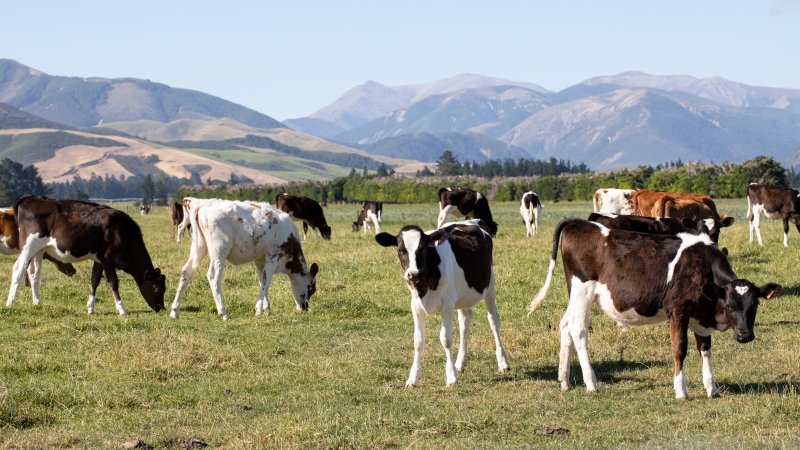
Top tips for successful calving
With spring upon us, it’s calving season for anyone breeding cattle. Even if you’re an experienced breeder, it’s worth revising your calving technique ahead of time. Successful deliveries are important for animal welfare, your safety and profitability on the farm. We’ve put together some tips to help you and your cows get through this challenging time.
Positioning
When cows are close to giving birth, your best position for ease of handling and comfort for the cow is to have it standing in a chute. The first step is to do a vaginal exam to determine if the calf is presenting correctly.
Normal presentation
Anterior presentation is the normal birthing position. This is where the calf is positioned head first and right side up with its forelegs extended into the pelvic canal. Any other position is abnormal. If the calf is in an abnormal position, seek help from your local farm vet.
Dilation
With the calf presenting correctly, it’s time to assist with dilation. Use shoulder length gloves or neck strap shoulder length gloves to cover both your arms and lube them liberally. Put both arms into the birth canal and interlock your fingers. Then expand your forearms to help with dilation and protect against tearing.
Fitting calving chains
Fit your calving chain to the forelegs above the fetlock and between the fetlock and hoof. Next, you’ll need to back the cow out of the chute. If the cow goes down in the chute while pulling the calf, you’re in for serious problems.
Halter the cow with a rope and back it out of the chute. Secure the lead to the back of the chute to stop the cow from bolting. Now ease the cow down and onto its side using the rope and secure it in place. This is the natural position for delivering a calf, as the cow can push harder and expand her pelvic opening, making it easier for the calf to birth.
Using your calf puller
You can assist the birthing process with a calf puller. Fit the chains to the eyelets of the puller. A puller provides greater power with reduced effort in difficult births. Never go any faster than the cow. Match her speed. Use the puller when she pushes and stop when she rests.
Once the calf has its forelegs and head showing, have a rest. After a pause, the cow will push again, and the calf will twist to align correctly for the final part of the delivery. Pull again, and the calf should deliver fully, safely and easily for all involved.
If you’re calving or lambing this spring, check out the Bainbridge product range for everything you need to get the job done.




Bainbridge Vet New Zealand© 2024 | Site by MRD Web